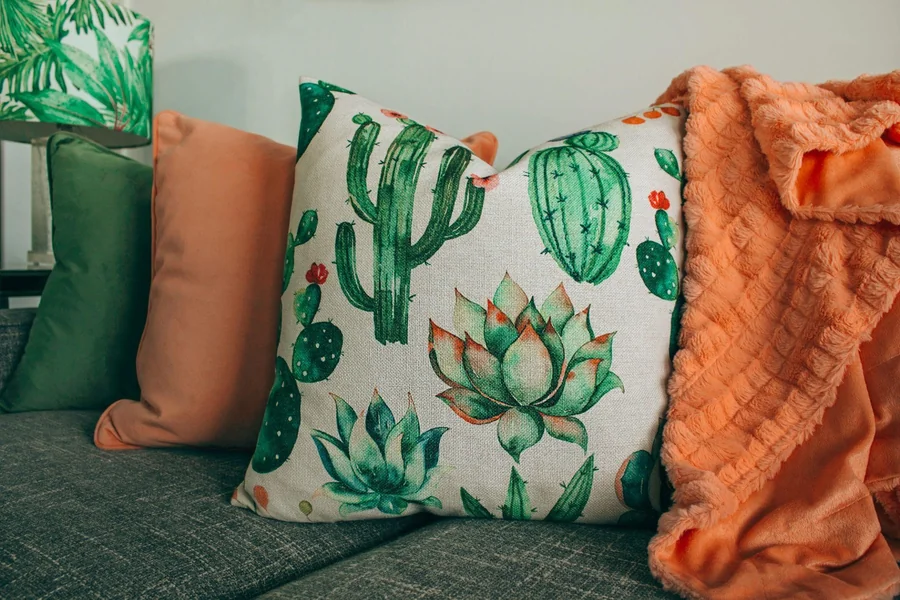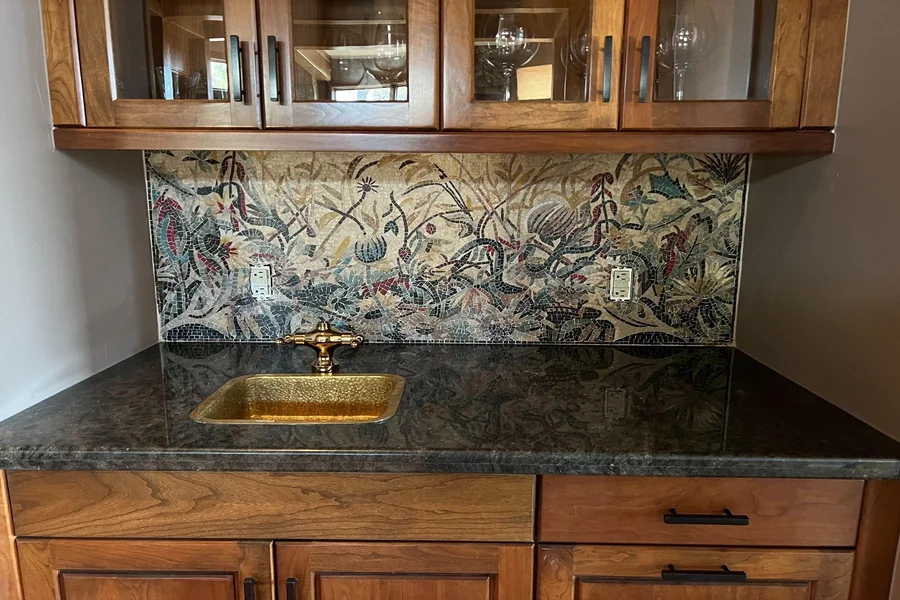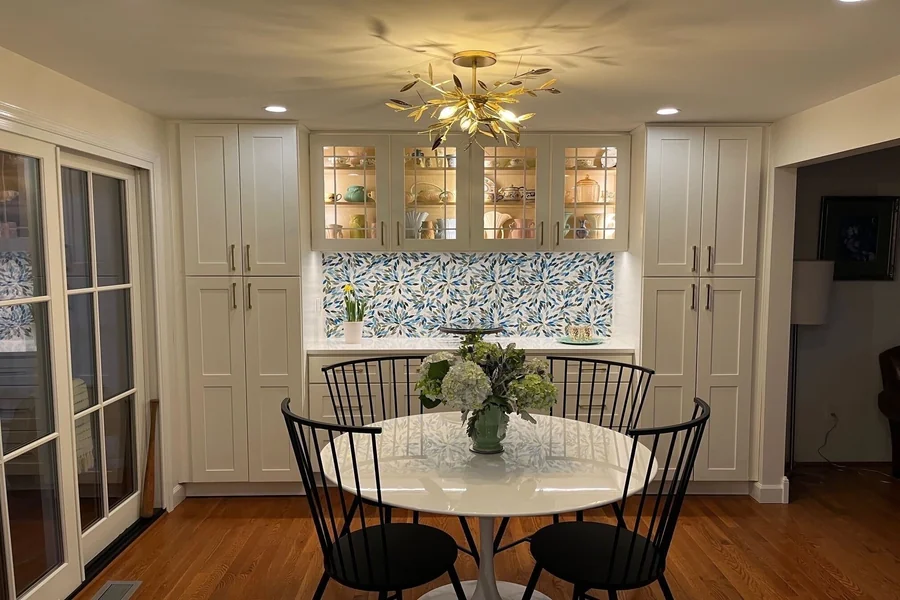Floral design has long been an enduring theme in interior decoration, spanning centuries and cultures with its ability to bring nature indoors in symbolic and aesthetic ways. In contemporary design, however, flowers are taking on fresh interpretations. They are no longer confined to romantic wallpaper or delicate upholstery; instead, they appear as bold structural elements, textural layers, and even in architectural detailing. Modern interiors now reinterpret floral motifs with a sense of innovation, turning what could once have felt traditional into a vital part of the twenty-first-century home.
In this article we explore ten distinctive approaches to weaving flower motifs into interiors with a contemporary sensibility. Each method demonstrates how designers are reimagining nature’s most enduring inspiration, balancing sophistication with playfulness, and timeless beauty with cutting-edge design.
Reimagining Walls as Canvases
One of the most dramatic ways to incorporate floral motifs in modern interiors is to treat walls as artworks in themselves. Instead of traditional floral wallpaper patterns, contemporary spaces feature oversized hand-painted murals that reinterpret botanical forms with abstract, geometric, or graphic precision. Think of a living room wall where magnified petals stretch across surfaces in muted monochrome, creating a sense of architectural rhythm rather than decorative detail.
Custom murals allow homeowners and designers to craft highly personal interpretations of flora. The choice of scale is essential here: larger-than-life blossoms evoke a sculptural effect, while stylized outlines nod to urban sophistication. By adopting restraint in palette, using charcoal, sepia, or metallics instead of bright hues, floral imagery shifts from quaint to cutting-edge.
Sculptural Lighting Inspired by Petals
Light fixtures shaped like flowers are nothing new, but today’s designers are redefining them with sculptural ambition. The floral chandelier, for instance, has been reborn in forms that are both ethereal and avant-garde. Crafted from glass, porcelain, or even recycled plastics, these designs capture the organic asymmetry of petals while embracing modern minimalism.
Imagine pendant lights cascading like a cluster of orchids in a dining room, or a statement chandelier resembling a blooming dahlia above a foyer. Rather than appearing overly ornamental, these fixtures work as contemporary art installations that happen to illuminate a space. The interplay of light and shadow across the petal-like forms reinforces the sense of movement and growth inherent in floral design, making lighting a medium where nature and technology meet
Furniture That Blooms
Furniture designers have also embraced floral inspiration in unexpected ways. Beyond simple upholstery patterns, entire silhouettes now take cues from blossoms. A lounge chair might unfurl like a tulip, while a coffee table’s base could echo the overlapping layers of a lotus. Such pieces transform everyday objects into sculptural elements, softening the linearity of modern interiors with organic curvature.
What makes this approach so effective is its subtlety. A chair inspired by petals doesn’t need to be clad in rose prints; instead, it communicates its floral essence through form and proportion. In this way, furniture can introduce flowers into a home while maintaining a clean, uncluttered aesthetic that resonates with contemporary design principles.

Floral Motifs in Textiles
Textiles remain one of the most versatile mediums for introducing floral elements. In modern interiors, however, designers are moving beyond dainty prints. Oversized, high-contrast blossoms rendered in bold brushstrokes give upholstery, drapery, and cushions a sense of drama. Think velvet cushions with deep indigo peonies or sheer curtains printed with stylized, monochromatic stems that add depth without overwhelming a room.
Equally compelling is the use of embroidery and appliqué, which bring texture and tactility to the floral story. By layering motifs into fabric, textiles can offer subtle complexity: flowers are no longer flat patterns but dimensional accents that enrich a space through both sight and touch. This approach aligns with the growing emphasis on sensory design, where interiors engage more than just the eye.
Floors That Bloom Underfoot
Floors offer an unexpected but powerful canvas for floral design. Advances in materials and fabrication allow for patterns that once seemed impractical. Carpets and rugs have embraced oversized botanical motifs, often abstracted into graphic designs that work well within minimalist or modernist spaces.
More permanent interventions can be achieved with tilework. Here, the idea of the floral mosaic becomes transformative. By assembling small fragments into petal-inspired designs, designers create surfaces that honor ancient craftsmanship while pushing it into the present. Whether incorporated into a bathroom floor or a kitchen backsplash, such detailing bridges history and innovation, grounding a space in timeless artistry while making it unmistakably contemporary.
Floral Glasswork and Transparency
Glass has become a fascinating medium for floral experimentation. Designers are etching or fusing blossoms into glass partitions, cabinet doors, and windows, producing patterns that play with light and shadow. This approach introduces florals in a way that feels less about decoration and more about atmosphere: flowers emerge and disappear depending on the time of day and the angle of light.
Colored glass offers another layer of interest. A door panel with faintly tinted petals, for example, can create subtle warmth in a room without dominating its aesthetic. This fluid relationship between nature and light reinforces the delicacy of floral imagery, translating it into something modern, versatile, and endlessly dynamic.
Nature-Inspired Metalwork
Metal, often associated with industrial interiors, might not immediately evoke florals. Yet metalwork can be surprisingly effective at translating natural motifs into a modern vocabulary. Designers are laser-cutting floral patterns into screens, railing panels, and decorative grilles, creating surfaces that feel both architectural and poetic.
The contrast between material and motif adds intrigue: steel vines climbing across a staircase balustrade, or brass petals forming the base of a console table, can soften a space without diminishing its contemporary sharpness. These flourishes act as reminders that modern interiors need not be austere; they can embrace nature’s beauty through unexpected mediums.
The Rise of Floral Ceilings
While walls and floors have long been the primary sites for floral expression, ceilings are now emerging as a new frontier. Painted, sculpted, or even digitally projected, floral designs overhead invite residents and guests to look upward, transforming the often-forgotten “fifth wall” into an immersive design feature.
Contemporary interpretations might include laser-cut panels with backlit blossoms, creating a floating garden effect, or subtle plasterwork that mimics the delicate veining of petals. In bedrooms or lounges, digital projection technology can wash ceilings with shifting floral imagery, evoking the sensation of lying beneath a blooming canopy. The result is atmospheric and enveloping, pushing floral motifs into unexpected spatial dimensions.

Artistic Statements Through Floral Mosaic Art
For those drawn to artistry, mosaic art offers another avenue to integrate floral motifs with elegance. Unlike painted or printed surfaces, mosaics add dimension and permanence, their tactile quality evoking craftsmanship and history. In contemporary interiors, mosaics have evolved beyond traditional religious or cultural depictions to embrace stylized floral designs that can span entire accent walls, bathroom niches, or kitchen splashbacks.
The allure lies in their dual identity: both decorative and architectural, both delicate and durable. Flowers translated into tiny tesserae suggest timeless beauty, while the graphic arrangements resonate with modern minimalism.
Living Flowers as the Ultimate Motif
Finally, the most authentic way to integrate floral motifs is to bring in actual flowers and plants. Contemporary interior design increasingly embraces biophilia, the principle that human well-being is enhanced by connection to nature. Incorporating real blooms through carefully curated arrangements or vertical gardens makes the floral theme tactile, fragrant, and alive.
This approach works best when done with restraint. Rather than overfilling rooms with bouquets, designers now favor sculptural arrangements that echo the principles of Japanese ikebana: minimal stems, purposeful lines, and a sense of asymmetry. Living flowers emphasize impermanence and seasonality, allowing interiors to evolve and refresh continually. In essence, they remind us that while motifs may be eternal, the real thing holds unmatched power.

